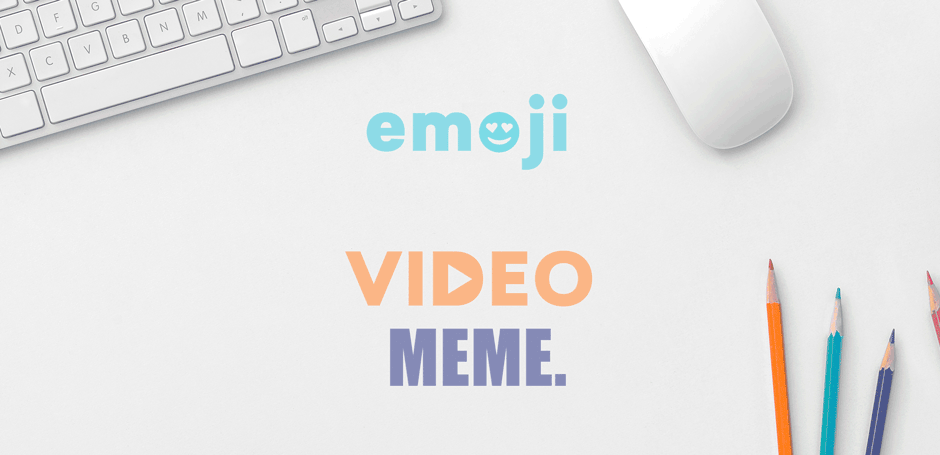How to Emoji, GIF, and Meme—Without Overdoing It
Published on February 28, 2018/Last edited on January 17, 2025/5 min read


Team Braze
Emoji, GIFs, videos, and memes collectively are, like,💥 🙋🏾 totally the thing right now 🙌 👻 ❗ It’s true that all four can effectively grab attention, clarify intent, and lighten the tone of mobile communication—the trick, obvi, is to use them correctly.
Emojis, GIFs, videos, and memes function roughly as visual illustrations
Who doesn’t like a photo! A gif! A silly little something in the middle of a text, an email, a social media post. Throwing in some visual element makes your communication more engaging. More interesting. More fun.
…and, not for nothing, more effective. In fact, a recent Braze study found that 59% of people say the are most likely to notice a message that includes an image! And that’s great because digital communication can be a hotbed of misunderstanding.
Visual cues can help clarify intention before a misunderstanding takes place. A smiley, for example, can serve to soften a message, to make it seem friendlier, just like an actual smile would. In fact, it’s been found that people’s brains process emoji as nonverbal, emotional communications rather than words.
GIFs can tell stories or illustrate points without taking any longer to load or to experience than their text-only equivalents. Clever memes are attention-grabbing and likely to be shared. Video often looks better on mobile devices than texts and still images do. All types of images deliver more information, faster, than text can—a picture is indeed worth a thousand words.
So obviously we should just throw away our traditional keyboards now! Not so…
Rules for emoji-ing, GIF-ing and meme-ing in moderation
There are lots of ways to get visual cues wrong, and over-using visual elements, or using them inappropriately, is counterproductive.
Rule #1: Check yourself for cultural correctness
Make sure your usage is correct as defined by the culture or subculture of your audience.
If you create a variation on a popular meme that makes it obvious you don’t get the in-joke, you’ve just undermined the credibility of your whole campaign.
Emoji are particularly easy to misuse because many are heavily symbolic. A smile is almost universally understood as an expression of conviviality, but the meanings of others are far from obvious to the uninitiated.
Adding to the complication, people in different countries—or even different states or regions within a country—use emoji differently, and some cultures like emoji a lot more than others do. Finland, for example, loves emoji. Tanzania? Not so much.
Rule #2: Chill with the visuals
Don’t use the elements just to use them. Random emoji-ing, embedding a GIF, or inserting a meme into every single message as a matter of routine, or using video even if you don’t have the budget to do it well, are all counterproductive.
While one emoji can be cool, 25 emoji in the same text notification does not make the text 25 times as cool.
Just as you need to be careful not to send too many push notifications to the same person, you also shouldn’t cram too many visual elements into the same notification, email, or social media comment.
- Visuals should supplement and expand on text, not replace it or dominate it.
- Make sure your emoji, GIFs, and other visuals are relevant to your message.
- Think spare and creative. Less is more.
Rule #3: Who you talkin’ to, Willis?
In other words, pay attention to your audience. As noted, different cultures and subcultures use emoji differently. Millennials tend to like memes more than their parents do, and way more than their grandparents. That said, memes have a casual, playful, and trendy mood with all age groups. So, there might be humorous or cheeky application possibilities for all age groups, but if you’re trying to reach older, conservative people who care about formality and tradition, skip the meme. It’s not going to resonate.
The good news is: segmentation! Different visuals can go to different subsets of your market, and you can test and adjust as you discover what works well and what falls flat.
Just as you can direct notifications to theright people at the right time, you can also craft messages to appeal to different audience subsets. People who live in states where emoji are less popular might still respond well to a text message with a simple heart emoji (everyone likes hearts, provided that the heart is an appropriate color for the message). Whereas, people in a more pro-emoji state might prefer a richer message with more complex symbols.
Rule #4: Be clever. Be fun. Be snappy.
The emoji and meme (and GIF and video) game is about more than simply pairing a word with a related image. To really make it work, you have to get your clever on.
Enjoy yourself, but don’t be too extra.
The venerable Sir Patrick Stewart, stage actor, award winner, and Royal Shakespeare Company player…recently loaned his voice to the poop emoji in 2017’s “The Emoji Movie.” It’s safe to say that emoji are in the mainstream, and are widely accepted across cultures, ages, and geographical regions.
That said, in your marketing, treat them (and GIFs and memes) like cologne. Just a little goes a long way, and only when applied properly. As ever, know your audience, and use their response as guidance in your visual-aid game.

Be Absolutely Engaging.™
Sign up for regular updates from Braze.
Related Content
View the Blog
Personalization at scale: What it is, how it works, and why it matters

Team Braze

Braze designated as a Google Cloud Ready partner for BigQuery customers

Team Braze

Real-time personalization explained: Benefits and use cases
